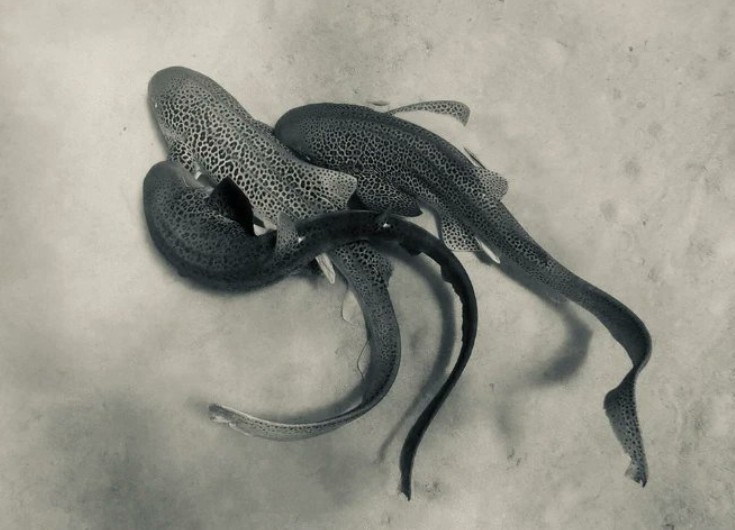Saucy Sea Spectacle: Leopard Sharks Stun Scientists with First-Ever Mating “Threesome”
In a world-first discovery that has marine experts buzzing, a group of risked Indo-Pacific leopard harpies have been mugged, engaging in an unanticipated three-way lovemaking session on the ocean bottom.
The jaw-dropping footage, captured off the seacoast of New Caledonia, reveals a rare and intimate regard into the private lives of one of the ocean’s most fugitive bloodsuckers.
The hassle took place at Abore Reef, a known hotspot for the species about 15 kilometres( 9 long hauls) from the landmass.
Experimenters were conducting a routine check when they stumbled upon a scene noway before recorded in the wild: a single female wolf mating sequentially with two different males.
“It’s rare to witness sharks mating in the wild, but to see it with an endangered species, and film the event, was so exciting that we just started cheering,” said marine biologist and study author Dr Hugo Lassauce.
Leopard shark mating has been observed in captivity, but always as a one-on-one affair. Generally, a male trails a womanish, smelling onto her pectoral fins to hold her in place.
This time, still, the lady was courted by two males at a former, each gripping a fin as they floated over the flaxen seabed.
“While I was surveying this particular aggregation of leopard sharks, I spotted a female with two males grasping her pectoral fins on the sand below me,” explained Dr Lassauce.
“I told my colleague to take the boat away to avoid disturbance, and I started waiting on the surface, looking down at the sharks almost motionless on the sea floor.”
The team documented a clear sequence of behaviour, pre-copulation, copulation, and post-copulation, mirroring what has been recorded in captive sharks. The key difference? The female allowed both males to mate, one after the other.
The first male took 63 seconds before drifting away, exhausted. The second followed swiftly, completing the act in 47 seconds.
Both males were left motionless on the seabed while the female swam off, displaying bite marks on her fins from the gripping males.
“I waited an hour, freezing in the water, but finally they started swimming up. It was over quickly for both males, one after the other. The first took 63 seconds, the other 47.
Then the males lost all their energy and lay immobile on the bottom while the female swam away actively,” added Lassauce.
While the hassle may sound like a sensational aquatic drama, scientists believe it could have significant consequences for conservation.
Leopard harpies are at risk, and understanding their parentage habits could help cover their dwindling populations.
Experimenters are now exploring whether multiple maternities might result from similar lovemaking events, which could increase inheritable diversity.
With ultramodern technology, smartphones, aquatic drones, and better diving outfits, marine biologists are witnessing further wolf behaviours than ever ahead.
But indeed in a period of constant discovery, this extraordinary leopard wolf lovemaking ritual stands out as a first in listed history.






